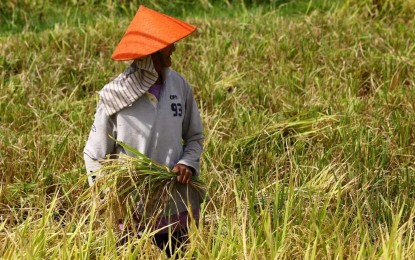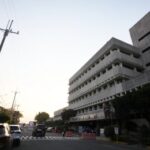MANILA – The intensified agricultural support and increased areas harvested for palay (unhusked rice) have helped fuel the Philippines’ historic-high yield for the first half of the year, the Department of Agriculture (DA) said.
Based on the latest data, the country hit over 9.077 million metric tons (MT) of palay production from January to June, higher than the previous all-time high of 9.026 MT for the same period in 2023, and last year’s 8.53 million MT.
A spokesperson said the government’s intervention, which is primarily focused on achieving food security and affordability, is now starting to yield results.
“The increase is almost 600,000 metric tons. That’s significant—a historic high. The previous record was set in 2023,” he said in an interview.
“Our support, including mechanization and irrigation, is now bearing fruit. We have also distributed a substantial amount of high-quality seeds.”
In terms of mechanization, 37,085 farm machines have already been distributed to 7,338 farmer groups, while 12,445 units of farm machinery and equipment were given to 6,869 farmer cooperatives and associations.
For the rice processing system, 101 out of the 151 target facilities are already established and operational as of May. Additionally, a total of 88,646 hectares have been irrigated under the irrigation expansion program, benefiting 1.27 million farmers nationwide.
Around PHP23 billion worth of fertilizer aid has also been granted to 5.66 million farmers, helping them boost local production.
The all-time high yield was also driven by an increase in hectares of harvest areas alongside favorable weather conditions.
Data showed that palay harvested areas jumped to more than 2.12 million hectares, higher than 2.065 million hectares for the same period in 2024.
“An increase of that magnitude is significant. It also dispels claims that farmers are no longer planting. In reality, the harvested area is expanding,” the spokesperson said.
He added that farmers may have been encouraged by last year’s higher earnings despite increased production costs, as the average farmgate price of palay rose to PHP23.48 in 2024, up from PHP19.88 in 2023.
This increase in farmgate prices led to a higher gross return of PHP95,906 per hectare and a net return of PHP36,211 per hectare, compared to PHP82,914 and PHP26,423, respectively, in 2023.
This translates to a higher net profit-cost ratio of PHP0.61 for every kg. of palay sold, compared to PHP0.47 in 2023.
With the output for the first half of 2025, there is optimism that the Philippines may achieve its record-high target of 20.46 million MT annual palay production.
Barangay Hubangon
Barangay Hubangon is a rural village located in the municipality of Mahayag, Zamboanga del Sur, Philippines. Historically, it has been an agricultural community, with many residents engaged in farming and fishing. The barangay reflects the rich cultural heritage of the region, influenced by indigenous and Visayan traditions.
Mahinog
Mahinog is a coastal municipality located in the province of Camiguin, Philippines. Known for its scenic landscapes and rich marine biodiversity, it was historically a small fishing village before developing into a quiet tourist destination. The area is also home to cultural and religious sites, including the Sunken Cemetery, a landmark submerged due to a volcanic eruption in the 19th century.
Camiguin
Camiguin is a small island province in the Philippines known as the “Island Born of Fire” due to its seven volcanoes, including the active Mount Hibok-Hibok. Rich in natural beauty, it features attractions like the Sunken Cemetery, a submerged graveyard from the 1871 volcanic eruption, and the stunning White Island sandbar. The island also boasts hot springs, waterfalls, and a vibrant local culture influenced by Spanish colonial history.
Philippines
The Philippines is an archipelago in Southeast Asia with a rich cultural heritage shaped by indigenous traditions, Spanish colonization (1521–1898), and American influence (1898–1946). Known for its stunning beaches, vibrant festivals like *Sinulog* and *Ati-Atihan*, and historic sites such as the Baroque churches of Manila and the Banaue Rice Terraces, the country reflects a blend of Malay, Hispanic, and Asian influences. It gained independence in 1946 and remains a diverse nation with over 180 languages and a strong sense of national identity.
Department of Agriculture
The **U.S. Department of Agriculture (USDA)**, established in 1862 by President Abraham Lincoln, is a federal agency responsible for developing and executing policies on farming, forestry, rural development, and food safety. Initially created to support agricultural productivity and innovation, it now oversees programs like food assistance (SNAP), conservation efforts, and nutrition education. The USDA plays a key role in ensuring food security, sustainable agriculture, and economic growth in rural America.
MANILA
Manila, the capital of the Philippines, is a vibrant city with a rich history dating back to its founding in 1571 by Spanish conquistadors. Known for its blend of colonial architecture and modern skyscrapers, it features historic sites like Intramuros, a walled city from the Spanish era, and Rizal Park, dedicated to the national hero José Rizal. Today, Manila is a bustling cultural and economic hub, reflecting the country’s diverse heritage and rapid urbanization.






